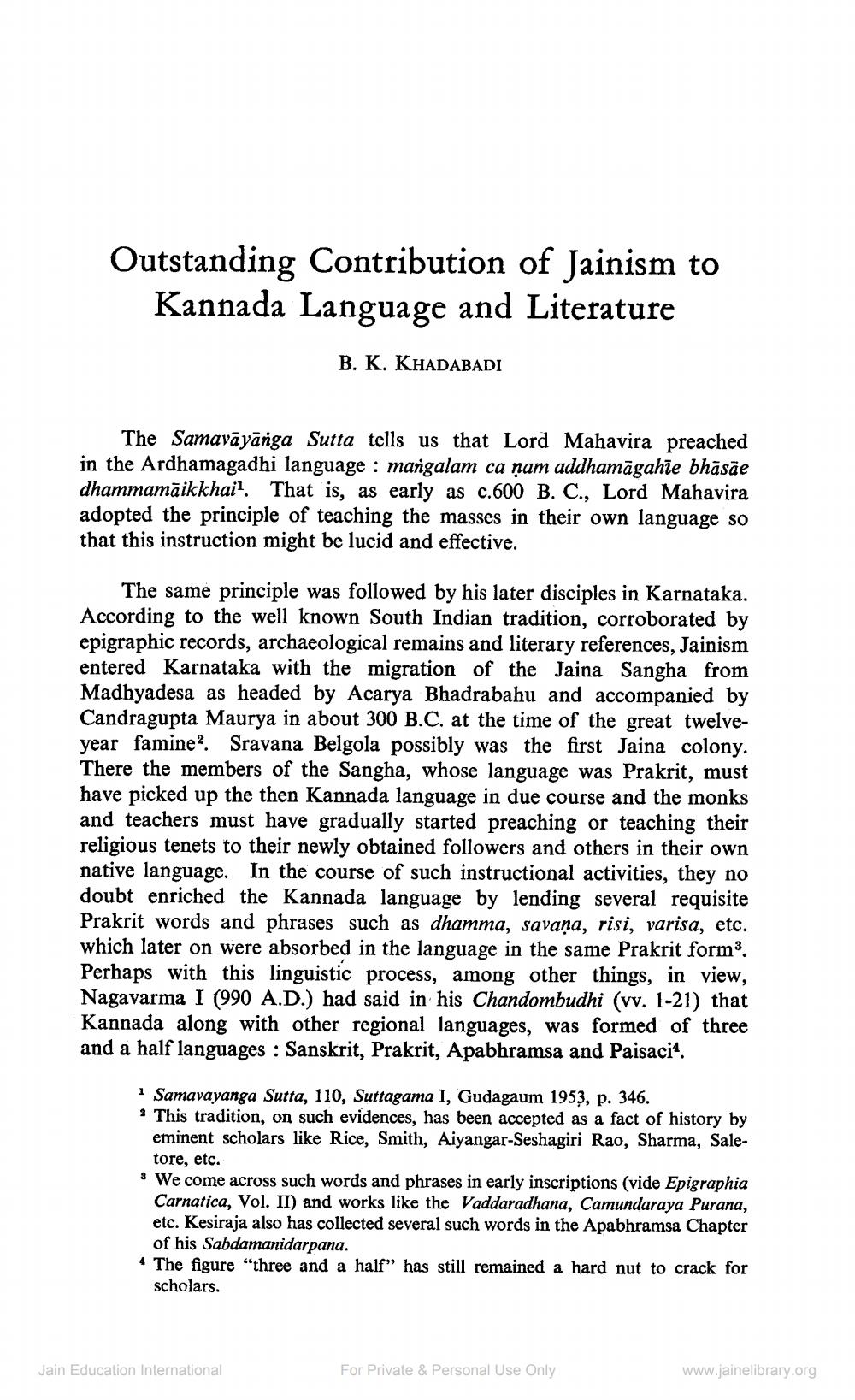Book Title: Jain Journal 1975 07 Author(s): Jain Bhawan Publication Publisher: Jain Bhawan Publication View full book textPage 7
________________ Outstanding Contribution of Jainism to Kannada Language and Literature B. K. KHADABADI The Samavāyānga Sutta tells us that Lord Mahavira preached in the Ardhamagadhi language : mangalam ca nam addhamāgahīe bhāske dhammamāikkhail. That is, as early as c.600 B. C., Lord Mahavira adopted the principle of teaching the masses in their own language so that this instruction might be lucid and effective. The same principle was followed by his later disciples in Karnataka. According to the well known South Indian tradition, corroborated by epigraphic records, archaeological remains and literary references, Jainism entered Karnataka with the migration of the Jaina Sangha from Madhyadesa as headed by Acarya Bhadrabahu and accompanied by Candragupta Maurya in about 300 B.C. at the time of the great twelveyear famine. Sravana Belgola possibly was the first Jaina colony. There the members of the Sangha, whose language was Prakrit, must have picked up the then Kannada language in due course and the monks and teachers must have gradually started preaching or teaching their religious tenets to their newly obtained followers and others in their own native language. In the course of such instructional activities, they no doubt enriched the Kannada language by lending several requisite Prakrit words and phrases such as dhamma, savana, risi, varisa, etc. which later on were absorbed in the language in the same Prakrit form. Perhaps with this linguistic process, among other things, in view, Nagavarma I (990 A.D.) had said in his Chandombudhi (vv. 1-21) that Kannada along with other regional languages, was formed of three and a half languages : Sanskrit, Prakrit, Apabhramsa and Paisaci". · Samavayanga Sutta, 110, Suttagama I, Gudagaum 1953, p. 346. * This tradition, on such evidences, has been accepted as a fact of history by eminent scholars like Rice, Smith, Aiyangar-Seshagiri Rao, Sharma, Sale tore, etc. * We come across such words and phrases in early inscriptions (vide Epigraphia Carnatica, Vol. II) and works like the Vaddaradhana, Camundaraya Purana, etc. Kesiraja also has collected several such words in the Apabhramsa Chapter of his Sabdamanidarpana. 4 The figure "three and a half” has still remained a hard nut to crack for scholars. Jain Education International For Private & Personal Use Only www.jainelibrary.orgPage Navigation
1 ... 5 6 7 8 9 10 11 12 13 14 15 16 17 18 19 20 21 22 23 24 25 26 27 28 29 30 31 32 33
